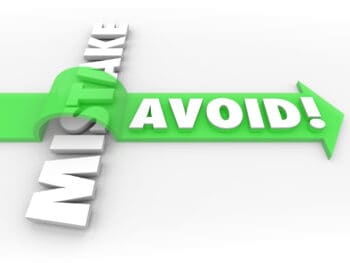
Consider Return to Work Post Injury
The clock is ticking immediately after a work injury to get the employee back to work. Once the employee receives medical care and is stabilized, the consideration of returning the employee to work should be a driving issue in every claim.
Successful return-to-work efforts start with the employer. Suggestions to coordinate with employers on these matters must include the following:
- Designated Return-to-Work Coordinator: Employers should have a return-to-work coordinator regardless of size. This person has access to key decision-makers within the company and can influence outcomes. This person must also be organized and willing to be a self-starter.
This post is one in a 3-part series:
- Consider Light Duty Work: Challenge employer representatives to be creative regarding return to work options. An injured employee under restrictions is often given a tedious desk job where they push the paper all day. While this is sometimes the only work that can be performed, it is vital to get buy-in from the employee by seeking their input.
- Work on Loan Options: Partnering with a local non-profit should also be explored for returning an injured employee to work. Again, seek their input on what work would interest them when under physical restrictions that limit their ability to perform work. Establish a plan for getting the employee back into their pre-injury workplace as soon as possible by avoiding situations where this work becomes long-term at a significant wage loss.
Make every effort to keep an injured employee working. This prevents the employees from requiring extensive work hardening programs, additional medical care, and endless payments of wage loss benefits. It also adds to workplace morale and limits employees’ excuses from returning to work.
Perverse Disincentives That Prevent Return to Work
Employers often offer their employees various benefits with positive intent, which leads to endless excuses when returning to work after an injury. An unintended consequence only adds to the money spent on a claim. Now is the time to examine these policies and consider removing them to encourage a return to work following an accident or injury in the workplace.
- Wage Continuation: Some employers offer to pay their injured employees 100% of their wage while out due to any disability. This included work-related accidents. These programs create a disincentive to return to work as the employee earns more receiving an employer-sponsored wage compared to receiving the 66⅔% that is typically paid for Temporary Total Disability benefits. Wage continuation programs could sometimes jeopardize an employer’s ability to remain insured under a workers’ compensation policy.
- Company Perks: Employers often offer various perks and other benefits to their employees, such as free or discounted gym memberships, use of a company car, paid dues to professional organizations, discounts with certain entities, and accrual of Paid Time Off. These benefits often extend when an employee is off work due to a work injury. While they may seem to add value to working for a company, employees will use this to their advantage. Effective claim teams can inform their insureds about these policies and encourage them to craft a better benefit scheme.
Click Link to Access Free PDF Download
- Other Collateral Source Benefits: Injured employees are sometimes allowed to remain off work for extended periods and remain eligible to return. An employer may offer their employee’s accident insurance or loan protection programs in other instances. These benefits are open-ended and encourage employees who suffered a work injury to maximize their benefits while staying off work.
Employers often develop perks to attract and retain employees. While there may be a business incentive to provide these programs, the result can be needless disability following a work injury. Members of the claim management team can work with their insureds to craft or modify programs to discourage extended disabilities and time off work following an injury.
FREE DOWNLOAD: “Step-By-Step Process To Master Workers’ Comp In 90 Days”
Conclusions
An effective and efficient workers’ compensation program should promote a need to return the employee to work after a work injury. There are several steps to implement an environment driven to reach this result. This includes establishing a return-to-work coordinator and taking steps to remove perverse disincentives. When this is accomplished, employees will return to work on time and help increase the effectiveness of a workers’ compensation claim program.

Michael Stack, CEO of Amaxx LLC, is an expert workers’ compensation cost containment systems and provides education, training, and consulting to help employers reduce their workers’ compensation costs by 20% to 50%. He is co-author of the #1 selling comprehensive training guide “Your Ultimate Guide to Mastering Workers’ Comp Costs: Reduce Costs 20% to 50%.” Stack is the creator of Injury Management Results (IMR) software and founder of Amaxx Workers’ Comp Training Center. WC Mastery Training teaching injury management best practices such as return to work, communication, claims best practices, medical management, and working with vendors. IMR software simplifies the implementation of these best practices for employer and ties results to a Critical Metrics Dashboard.
Contact: mstack@reduceyourworkerscomp.com.
Workers’ Comp Roundup Blog: http://blog.reduceyourworkerscomp.com/
©2023 Amaxx LLC. All rights reserved under International Copyright Law.
Do not use this information without independent verification. All state laws vary. You should consult with your insurance broker, attorney, or qualified professional.
FREE DOWNLOAD: “Step-By-Step Process To Master Workers’ Comp In 90 Days”











